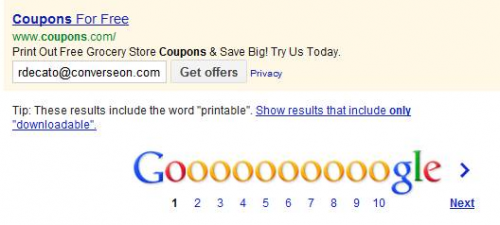You can’t underestimate the difficulty of actually persuading someone to do something. We all walk through our days being bombarded by pitches to buy things and we develop a king of “default no” for everything that comes our way. Studies show that each person has only a certain amount of energy for making decisions each day, and once that energy is depleted, we each tend to retreat to minimalist, low-risk responses, which for a buying decision usually means “NO.” So, your job as marketers is to constantly take the friction out of the conversion.
What exactly is “conversion friction”? It’s any part of the experience that can be removed to reduce decision fatigue. Some people think of it as reducing clicks–reasoning that every extra step is actually a chance for the prospect to abandon your site. There is some truth to this, but it is actually too simplistic. I’ve tested experiences where we added steps (and clicks) and raised the conversion rate. How did we do that? We paid attention to the difficulty of each decision as well as the number of decisions.

Think of it this way. Would you rather answer a series of simple questions one by one, or get a long scrolling page with many questions on it? Most experiences do better with the one by one questions, with much higher abandon rates when faced with an overwhelming long complex page. Usability types tie this feeling of being overwhelmed to “cognitive load”–a description of the difficulty of the decisions being required. Basically, the more thinking we make them do, the fewer customers we get.
But sometimes the conversion experience can be made simpler with fewer steps. Robin McCarthy, a colleague at Converseon, showed me something that Google seems to be testing:
Talk about removing friction! Google has been playing with these so-called ad extensions for some time, but think about how much easier it is to sign up for something on the search results page than having to click through to the web site and figure out what to do.
Google and every good marketing company is constantly trying to remove friction–what are you doing with your marketing?





